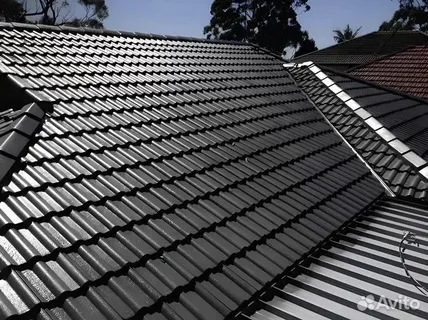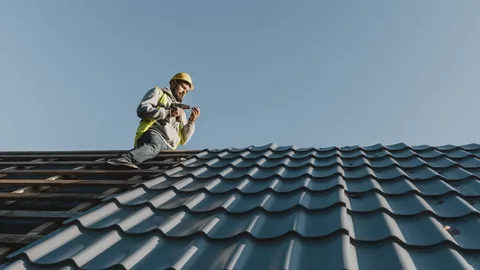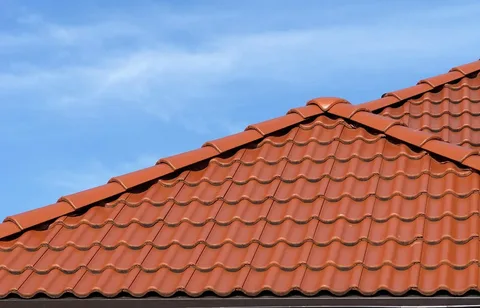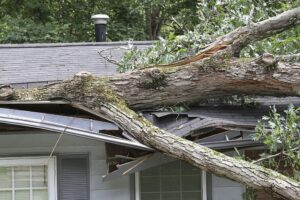Roofing work, particularly on commercial properties, is one of the most dangerous jobs in the construction industry. The risks are high due to the complexity and scale of the structures, as well as the tools and equipment required. However, with the right safety precautions, risks can be minimized, and the safety of workers can be ensured. In this blog, we will explore the essential roofing safety guidelines that every commercial property owner, contractor, and roofing company should be aware of. Additionally, we’ll discuss the critical role roofing contractors, like Atlas Roofing & Restoration, play in ensuring a safe roofing environment.
1. Personal Protective Equipment (PPE)
Personal protective equipment is the first line of defense when it comes to ensuring worker safety. All roofers must wear the appropriate gear to protect against falls, debris, sharp objects, and other hazards common to roofing environments.
- Harnesses and Lanyards: These are mandatory for all roofers working at heights. A fall protection system ensures that even in case of a slip, the worker can be safely caught before hitting the ground.
- Hard Hats: Roofers should wear hard hats to protect against falling debris or tools. This is especially important in areas with high traffic or overhead work.
- Safety Boots: Slip-resistant, steel-toed boots help roofers maintain a firm grip and prevent injuries from falling objects.
- Gloves: Roofing tasks often require the use of sharp tools or heavy materials. Wearing gloves helps prevent cuts and abrasions.
- Eye Protection: Sunglasses or safety goggles help prevent dust, debris, and bright sunlight from causing eye injuries.
2. Fall Protection
Falls are the most significant cause of injuries and fatalities in the roofing industry. Implementing fall protection systems is crucial to reducing the risks. These systems can include:
- Guardrails and Safety Nets: For commercial properties with large roofs or extensive flat areas, guardrails can prevent workers from falling off the edge. Safety nets are also helpful in catching workers who may accidentally slip.
- Fall Arrest Systems: These systems, including ropes, harnesses, and lanyards, are designed to stop a fall in its tracks. The equipment should be properly installed and inspected regularly.
- Anchor Points: Roofers must always secure their lanyards to stable anchor points. These anchor points must be structurally sound to prevent accidents.
3. Training and Certification
Proper training is a critical part of maintaining roofing safety on commercial properties. All roofing personnel should undergo safety training programs that teach them how to identify hazards, use safety equipment, and respond in emergency situations.
- OSHA Training: The Occupational Safety and Health Administration (OSHA) provides comprehensive training on roof safety. Employers must ensure that their workers are familiar with OSHA guidelines and have undergone the necessary safety certifications.
- First Aid and CPR Training: Roofers should be trained in first aid and CPR in case of accidents. This ensures that immediate help can be provided in an emergency, even before medical professionals arrive.
- Roofing Safety Courses: These courses teach roofers about the specific dangers associated with roofing work and the proper methods of mitigation.
4. Workplace Organization and Housekeeping
A disorganized work environment can significantly increase the chances of accidents. Maintaining a tidy, organized roofing workspace is vital for ensuring safety.
- Clear Pathways: Workers should always have clear pathways to move materials and equipment. Obstructions, such as loose tools or debris, can cause tripping hazards.
- Tool Safety: Tools should be stored in designated areas when not in use, and workers should ensure they are properly maintained. A worker should never leave tools lying around, as they can become a tripping hazard or cause accidental injuries.
- Debris Removal: Roofing work can generate a lot of waste. Contractors must clean up debris and dispose of materials promptly to avoid any safety hazards.

5. Weather Conditions
Weather plays a significant role in roofing safety. Working in adverse weather conditions can greatly increase the likelihood of accidents. Commercial property owners and roofing companies must monitor weather forecasts and ensure that workers are not exposed to dangerous conditions.
- Avoid Working in Strong Winds: High winds can make working on a roof dangerous, as they can cause materials to fly off and dislodge workers. If strong winds are expected, the job should be rescheduled for a safer day.
- Rain and Wet Conditions: Roofs can become slippery during rain, creating hazardous conditions for roofers. Roofers should avoid working on wet roofs or use safety measures like ropes and harnesses if work is necessary during rainy weather.
- Extreme Heat and Cold: Extreme temperatures can lead to heat exhaustion or frostbite. It is important to ensure that roofers take regular breaks in the shade or warm areas, and are hydrated in hot conditions.
6. Roofing Material Handling
The proper handling of roofing materials is essential for preventing injuries during installation. Commercial properties often require heavy materials that can be cumbersome to handle.
- Use of Mechanical Lifting Equipment: For larger projects, mechanical lifts such as cranes or hoists can be used to lift heavy roofing materials to the roof. This reduces the strain on workers and minimizes the risk of injury.
- Proper Lifting Techniques: Roofers should always use proper lifting techniques to prevent back and muscle injuries. This includes bending the knees and keeping the back straight while lifting heavy materials.
- Safe Storage: Roofing materials should be properly stored on the roof or nearby, ensuring they are stable and unlikely to fall.
7. Electrical Safety
Roofers working on commercial properties must be aware of potential electrical hazards. Many commercial roofs have electrical systems that can pose serious risks if not handled properly.
- Power Lines: Roofers should stay at least 10 feet away from power lines. If working near power lines, they should be de-energized or shielded, and workers must use insulated tools.
- Extension Cords: If electrical equipment is being used, extension cords should be placed away from walkways to avoid tripping hazards. Electrical cords must also be inspected regularly to ensure they are not frayed or damaged.
8. Emergency Preparedness
Despite taking all necessary precautions, accidents can still occur. Commercial roofing companies must be prepared for emergencies to minimize the consequences of any incident.
- Emergency Response Plan: Every roofing crew should have a detailed emergency response plan, which includes evacuation routes, first aid locations, and emergency contacts.
- First Aid Kit: Every roofing job site should have a first aid kit readily available. It should be stocked with essential medical supplies to handle minor injuries until professional medical help arrives.
- Accident Reporting: Any accidents or near-misses should be immediately reported and investigated. This helps identify areas where safety measures can be improved.

9. Hiring Experienced Roofing Contractors
One of the most important safety guidelines for roofing on commercial properties is to hire experienced and qualified roofing contractors. Contractors who have been in the industry for years are familiar with the best practices, industry standards, and local regulations. Atlas Roofing & Restoration is a trusted provider of commercial roofing services and adheres to the highest safety standards to protect both workers and property owners. With years of experience in roofing, we ensure that every project is handled with care, professionalism, and attention to safety.
Conclusion
Roofing work on commercial properties presents unique safety challenges, but with the right preparation and precautions, the risks can be significantly reduced. Commercial property owners must ensure that their roofing contractors adhere to these safety guidelines to protect the workers and the property itself. With the right tools, training, and protective equipment, roofing projects can be completed safely and efficiently. For those seeking reliable, professional roofing services, Atlas Roofing & Restoration offers exceptional services backed by years of experience and commitment to safety.




